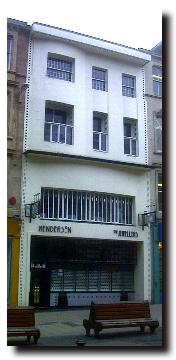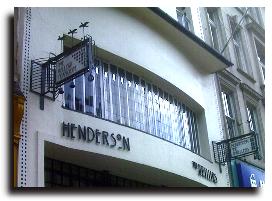 Born in the Victorian age when many women were expected to remain at home as housewives, Kate Cranston was fortunate to be born into a Glasgow family where there was an entrepreneurial spirit. Her father was a hotelier and tea merchant, her brother owned a tearoom and a female cousin managed a hotel.
Born in the Victorian age when many women were expected to remain at home as housewives, Kate Cranston was fortunate to be born into a Glasgow family where there was an entrepreneurial spirit. Her father was a hotelier and tea merchant, her brother owned a tearoom and a female cousin managed a hotel.
Tearooms became a feature of Glasgow in the second half of the 19th century but Kate Cranston was to take the concept to new heights with high standards and innovative design. Initially, tearooms had been established in part to encourage temperance in a society where alcohol abuse was widespread. Tearooms became valuable places for socialising and were frequented by both men and women (at a time when respectable women were only just able to go out on their own).
In 1878, Kate followed in her brothers's footsteps and opened her own tearoom for the first time. In time, she was operating four establishments - in Argyle Street, Buchanan Street, Ingram Street and Sauchiehall Street. Her standards were of the highest and she ran them with military precision.
One of her great achievements was to recognise and encourage the artistic talents of Charles Rennie Mackintosh and his wife Margaret Macdonald. The Willow Tearoom in Sauchiehall Street was the most famous of these. The name Sauchiehall originally meant "alley of willows". The elegant Victorian ladies, who drank tea sitting on the unique high-backed Mackintosh furniture, would never dream that their chairs would be worth millions of pounds a hundred years later. Mackintosh not only created the furniture and decor but details down to the cutlery and layout of the building.
Part of the Willow Tearoom has been restored (though clearly not with original furniture), including much of the frontage with its plain white finish with a distinctive chequered border, leaded windows and Mackintosh ironwork. Many of the motifs reflect the "willow tree" theme. The "fenetre en longeur", a room-wide window (pictured below), was part of the interior of the Room de Luxe. Unfortunately, the ground floor and trading signs are now for a jewelers's shop, selling "Mockintosh" souvenirs. But there is still an award-winning tearoom upstairs.

Kate was a bit eccentric at times. She dressed in black Victorian crinolines, long after they had gone out of fashion but she had an astute business sense. In 1892 she married John Cochrane and after a happy marriage she was devastated when he died in 1917. She sold off her tearooms and wore black for the rest of her life. With no children, she left two thirds of her estate to the poor of Glasgow in her will when she died in 1934.



